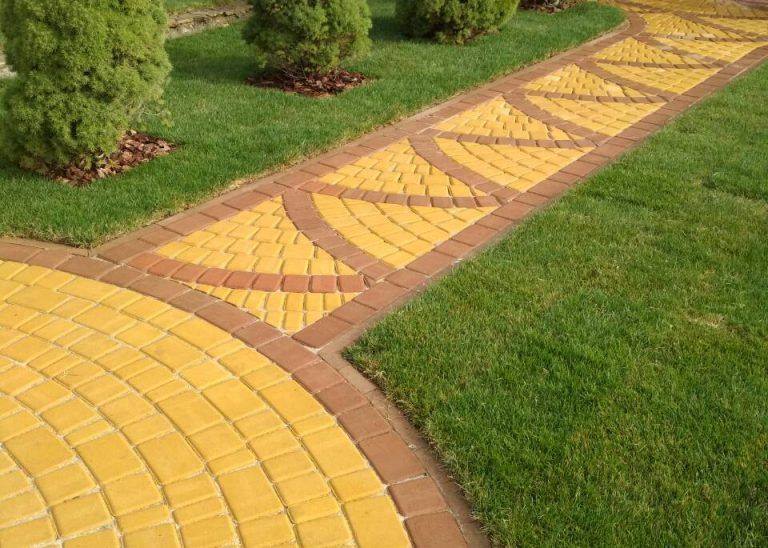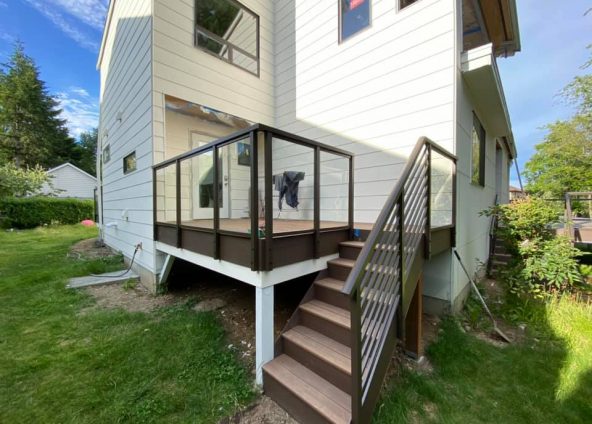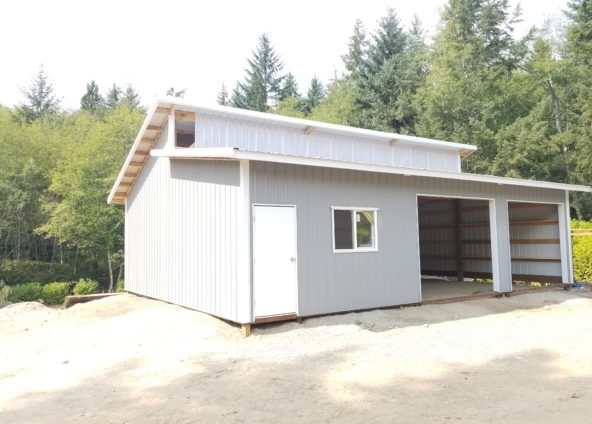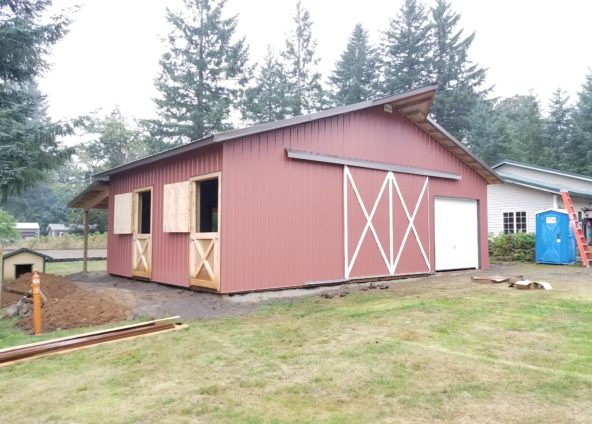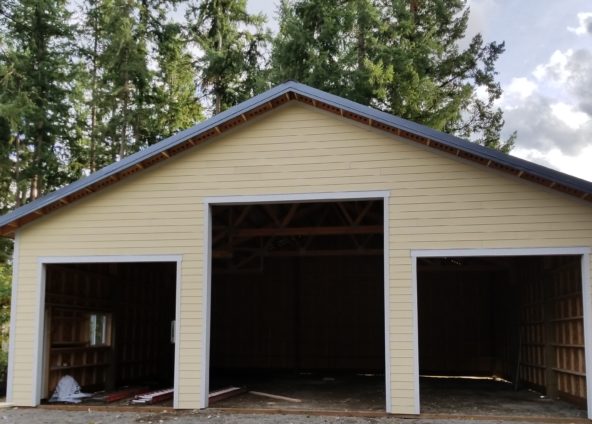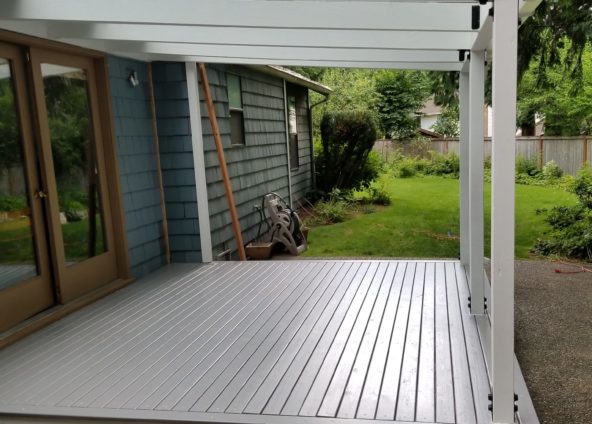Garden paths from the paving blocks: what must know?
If you think about the arranging garden paths or already laying them out with your own hands in the country, then we have created for you a selection of useful tips for their proper arrangement. In order not to make mistakes in the planning of tracks and save yourself from unsuccessful combinations of materials, we suggest that you study these tips.
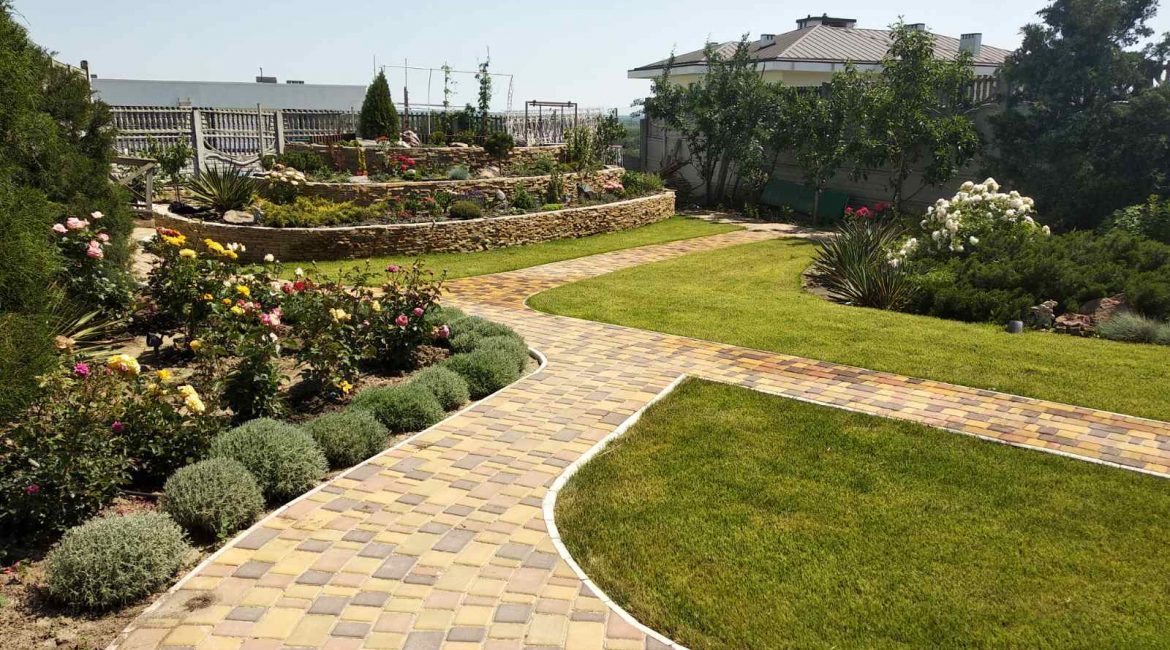
1. Consider the style of the house
When thinking about arranging a system of tracks, first of all, consider the unity of composition and the already established style of your site. It is important here not to depart from the concept originally conceived. Is your hi-tech home? Then use concise large-format slabs of clear geometry and cold shades for paving. It is unlikely that aged textures and bright and color-rich paving will be appropriate here. The garden in the English style involves pastel natural colors of the material, free forms and winding paths. Stick to the shades and shapes that are specific to your style of home and garden.
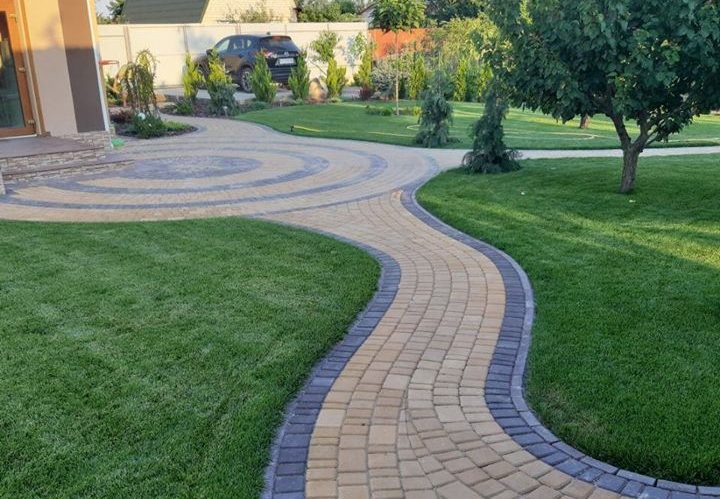
2. Choose the color combinations
Keep in mind that the wrong combination of paving colors with the facade of a house can reduce the cost of even the most elegant country house. Choose shades to match the facade of the house or vice versa, work in contrast. In order to avoid excessive variegation and catchiness, avoid bright saturated materials for tracks. The most preferred are natural colors and textures for natural materials, which will be combined with the overall picture of the landscape. This can be, for example, the paving slabs made using ColorMix technology (technology for coloring paving slabs for natural materials).
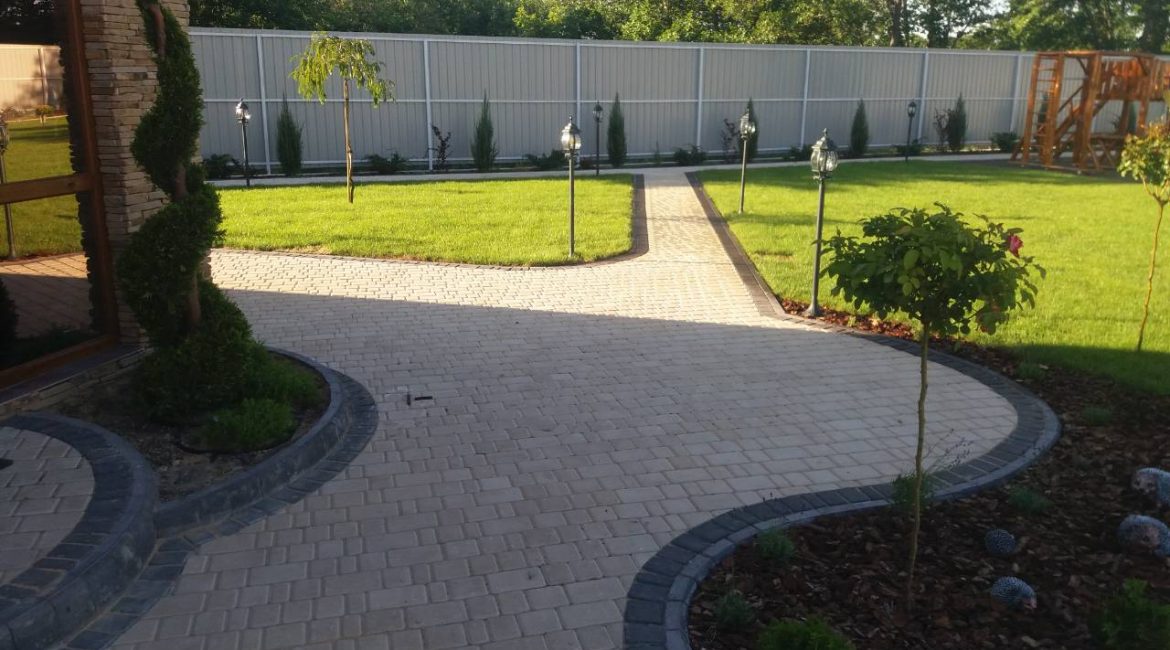
3. Lay winding or straight paths
The choice of track geometry primarily depends on the overall style of your garden:
The Straight paths are preferable when arranging a garden in a regular style with its order and symmetry.
meandering paths, on the contrary, are natural for a freer landscape style.
In any case, when choosing tracks, do not forget about their functionality and convenience. It is important that when planning routes the shortest paths from one point of the site to another be taken into account. But at the same time, try to avoid both an excessive amount of bends and straight angular L-shaped transitions and sharp corners. Try connecting the zones with a smooth, soft-curved line of tracks.
Tip: First of all, you need to carefully consider the location of the tracks and connect all the functional areas of the site. To do this, schematically draw a plan of the site with all the buildings (house, gazebo, garage, patio, etc.), on which to lay the routes
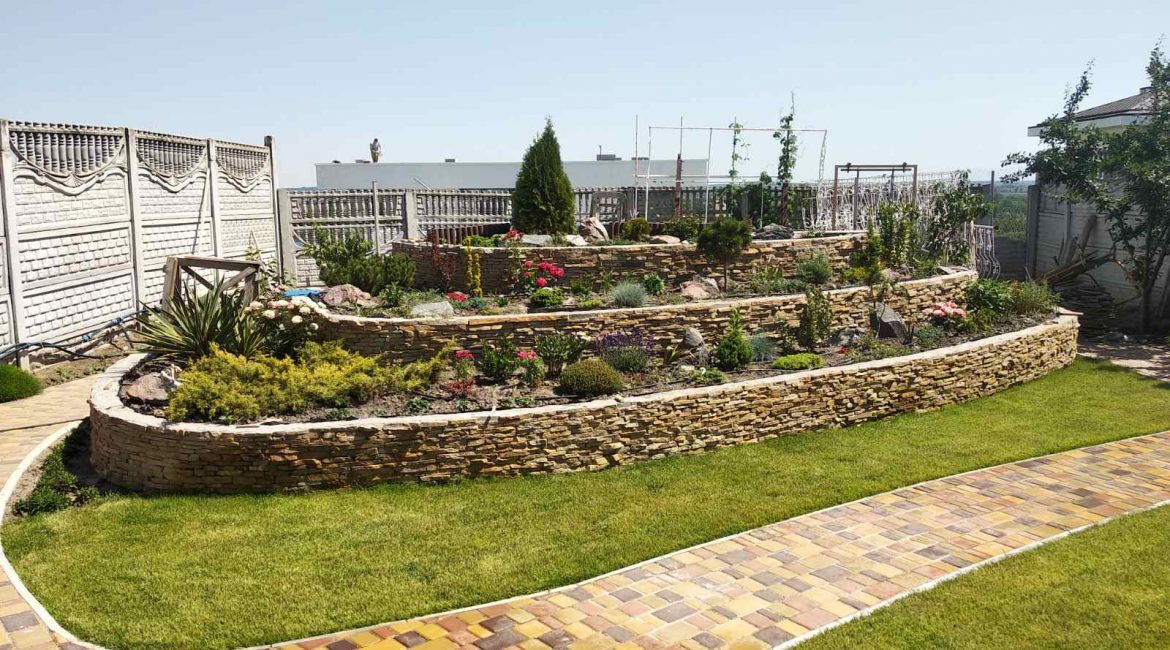
4. Determine the width of the tracks
The width of the tracks is selected, primarily, based on functionality. As a rule, it is believed that the width of the track for one person is 20-30 inch, respectively, so that two people can stretch out – about 50 inch. The most wide should be the often used tracks, for example leading to the main entrance group of the house. Household and secondary paths can be made already, about 20-25 inch.
Tip: Start installing borders only after you decide on the shape of the tile to avoid cropping.
Select paving material
The most suitable materials for paving private spaces:
the paving slabs and pavers;
the paving clinker;
the natural stone.
The main activity of the company is :
- building of the garages, hangars,
- industrial floors, polishing of the concrete, industrial floors painting
- residential remodeling,
- building of decks and porches

